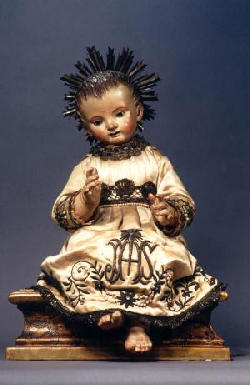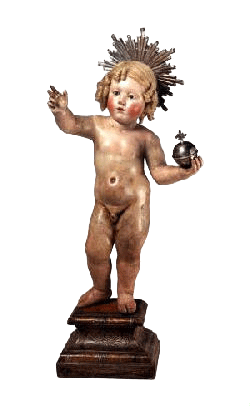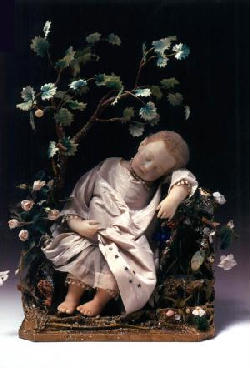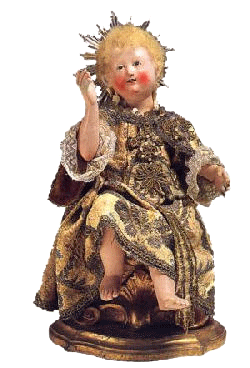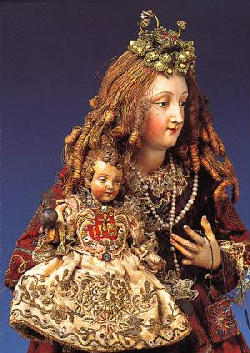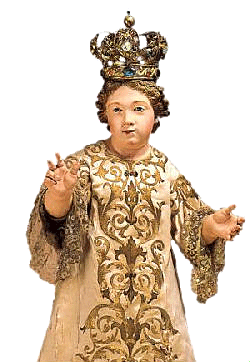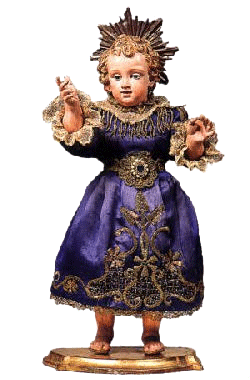Il Bambino Gesù
Italian Figures of the Infant Jesus from Three Centuries
Long before Christmas cribs with their narrative scenes became popular, small figures of the Infant Jesus formed the centre of Christmas festivities. Since the late Middle Ages, the Infant Jesus has been depicted in numerous ways as a baby cradled in a manger during monastical plays, as a blessing small ruler standing on the altar, as a festively dressed Heavenly Bridegroom in the cell of a nun. Some figures of the Infant Jesus became venerated images due to miraculous events associated with them, such as the Bambino of Aracoeli in Rome, the Infant Jesus of Prague, or that from the Loreto Monastery in Salzburg.
In Italy and here particularly in the south many families since the 18th century have owned not only Christmas cribs comprising numerous figures but also a figure of the Infant Jesus, usually depicted standing and nude, the size of a boy aged about 18 months. These figures were given magnificent wigs with curly hair, precious clothes, jewellery, and crowns made of silver and gold; they were called "piccolo ré, small king, and were frequently displayed all year round.
Over a hundred such Italian figures of the Infant Jesus dating from the 18th to the early 20th century from the private Hiky Mayr Collection will be on show at the Palais Harrach. The exhibition is divided into different parts, each dedicated to a particular type: from the lying, helpless child in a manger, to the boy in his mothers arms, to the blessing small king. The richly decorated clothes of the Infant Jesus will be displayed in a special room; iconographical particularities such as the Passion Child or the Sleeping Infant Jesus will be explained. Attention will also be paid to the different materials used to make the figures: apart from wood, wax, terracotta and cartapesta (papermaché) were used. In connection with the exhibition, the Austrian Museum of Folklore will present a show dedicated to the "Blessed Small Jesus in Devotional Prints timed to run concurrently with this exhibition.
Information
25 November 1998
to 31 January 1999
Palais Harrach
1010 Wien, Freyung 3
I. Stock




